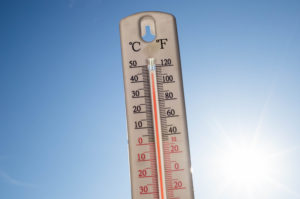
Continuing the efforts to protect those most vulnerable in California and with a warming trend moving through state, the California Governor’s Office of Emergency Services (Cal OES) is dedicated to ensuring that the Access and Functional Needs (AFN) community can promptly respond to an emergency.
The Office of Access and Functional Needs (OAFN) approach to communicating with the community before, during, and after disasters is dynamic and can vary depending on the event. OAFN relies on a vast network of partners to ensure consistent and inclusive messaging throughout the entire community.

OAFN Engages with the Cal OES Statewide Access and Functional Needs Community Advisory Committee
The group, which consists of executive leadership from some of California’s largest AFN-specific community-based organizations, is an invaluable resource to ensure messaging gets spread statewide to individuals at highest risk for negative outcomes associated with disasters. Committee members include NorCal Services for the Deaf and Hard of Hearing and other disability-specific groups.
OAFN partners with Cal OES to promote accessible messaging by leveraging its statewide contract for American Sign Language (ASL) services, bringing in credentialed interpreters, supporting language translation requests and providing remediation services to create Section 508 compliant electronic content on websites and social media.
During large-scale and ongoing events, OAFN hosts Statewide Access and Functional Needs Leadership Coordination calls. These calls bring together individuals with access and functional needs, community-based organizations, emergency managers, state agency/department representatives, the National Weather Service, and other relevant partners to provide briefings and participate in Q&A sessions specific to particular events.

Cal OES and OAFN encourage Californians to follow a few important steps to keep yourself, your loved ones, neighbors and pets comfortable and safe during a heat event.
- Avoid strenuous activity and direct exposure to the sun during the hottest parts of the day, typically from noon to 6 p.m.
- Stay hydrated and don’t wait until you’re thirsty to drink water.
- Protect your skin using sunscreen with SPF 30 or above.
- Wear lightweight, loose-fitting clothing.
- Ensure your pets have plenty of cool, fresh water.
- NEVER leave children or pets in the car. Even when temperatures outside are mild, the temperature inside the car can reach 100 degrees in less than 10 minutes.

Items/Tips for People Who are Deaf or Hard of Hearing
- Keep extra batteries for hearing aids.
- Pack pen and paper to communicate with someone who does not know sign language.
- Consider carrying a pre-printed copy of key phrases, such as “I speak American Sign Language (ASL) and need an ASL interpreter” or “If you make an announcement, please write it down for me.”
Make a Plan
- Create a network of family, friends and neighbors who can assist you during an emergency.
- Make sure at least one person in your network has an extra key to your home, who knows where you keep your emergency supplies, and knows how to use lifesaving equipment or administer medicine.
- Don’t forget your pets or service animals. Not all shelters accept pets, so plan for alternatives.

Prepare Your Emergency Kit
- Water
- Food
- Medicine and medical supplies
- First aid kit
- Flashlight
- Extra batteries
- Important documents
- Cell phone with chargers and a backup battery
- Food and supplies for your pet
Additional Important Resources
- Translation services
- Identified an accessible evacuation route and shelter
- Transportation available
- Available resources in your community
- Enough supplies at home
- Monitoring weather forecasts
